| A world of art, research, conservation, and philanthropy |

Yokosuka Story #121, 1976, Ishiuchi Miyako. Gelatin silver print. © Ishiuchi Miyako
OPENING THIS MONTH
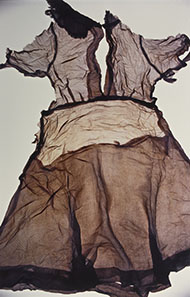 ひろしま/hiroshima, #9 (Ogawa Ritsu), 2007, Ishiuchi Miyako. Chromgenic print. Courtesy of and © Ishiuchi Miyako ひろしま/hiroshima, #9 (Ogawa Ritsu), 2007, Ishiuchi Miyako. Chromgenic print. Courtesy of and © Ishiuchi Miyako |
Ishiuchi Miyako: Postwar Shadows
October 6, 2015–February 21, 2016 | The Getty Center
Self-taught
photographer Ishiuchi Miyako stunned the Japanese photography
establishment in the late 1970s with grainy, haunting, black-and-white
images of Yokosuka— the city where Ishiuchi grew up and where the United
States established an important naval base in 1945. Fusing the personal
and political in her work, Ishiuchi interweaves her identity with the
complex history of postwar Japan that emerged from "shadows" cast by
American occupation. Presenting photographs made over the last 40 years,
this exhibition includes Ishiuchi's most recent series, ひろしま/hiroshima, 70 years after the U.S. atomic bombing of Hiroshima.
Learn more about the exhibition »
Learn more about the exhibition »
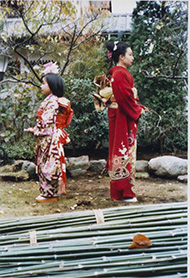 1979 and 2006, Kitakamakura, Japan, 2009, Otsuka Chino. Chromogenic print. Wilson Centre for Photography. © Otsuka Chino 1979 and 2006, Kitakamakura, Japan, 2009, Otsuka Chino. Chromogenic print. Wilson Centre for Photography. © Otsuka Chino |
The Younger Generation: Contemporary Japanese Photography
October 6, 2015–February 21, 2016 | The Getty Center
Several
young Japanese photographers garnered attention in the 1990s, when
their bold, colorful, often provocative pictures of themselves and their
immediate worlds were collectively dubbed "girl photographs." This
exhibition celebrates the emergence of five talented female
photographers from Japan whose careers began in the 1990s and
2000s—Kawauchi Rinko, Onodera Yuki, Otsuka Chino, Sawada Tomoko, and
Shiga Lieko.
Learn more about the exhibition »
Learn more about the exhibition »
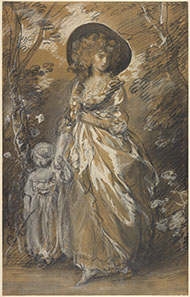 A Lady Walking in a Garden with a Child, about 1785, Thomas Gainsborough. Black chalk with stumping and heightened with white pastel. The J. Paul Getty Museum A Lady Walking in a Garden with a Child, about 1785, Thomas Gainsborough. Black chalk with stumping and heightened with white pastel. The J. Paul Getty Museum |
Art of the Fold: Drawings of Drapery and Costume
October 6, 2015–January 10, 2016 | The Getty Center
This
exhibition of drawings from the permanent collection surveys how
studies of drapery and costume offer more than naturalistic
representations of material. In drawings of soldiers, peasants, nobles,
and foreigners, clothing served as a primary indicator of social
standing and class. In designs made for the theater, costume could
embellish or even mask identity.
Learn more about the exhibition »
Learn more about the exhibition »
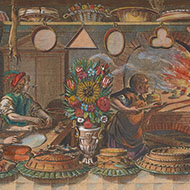 The Pastry Shop (detail), 1600s, Abraham Bosse. The Getty Research Institute The Pastry Shop (detail), 1600s, Abraham Bosse. The Getty Research Institute |
The Edible Monument: The Art of Food for Festivals
October 13, 2015–March 13, 2016 | The Getty Center
This
exhibition examines elaborate artworks made of food that were created
for royal court and civic celebrations in early modern Europe. Rare
books and prints drawn from the Getty Research Institute's Festival
Collection document the public celebrations and street parades that
featured large-scale edible monuments made of breads, cheeses, and
meats, as well as at court festivals, where banquet settings and dessert
buffets featured magnificent table monuments made of sugar, flowers,
and fruit.
Learn more about the exhibition »
Learn more about the exhibition »
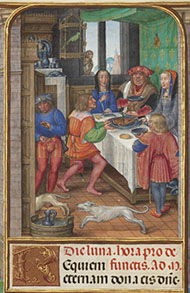 The Feast of Dives
(detail), about 1510–20, Master of James IV of Scotland. Tempera
colors, gold, and ink on parchment. The J. Paul Getty Museum, Ms. Ludwig
IX 18, fol. 21v The Feast of Dives
(detail), about 1510–20, Master of James IV of Scotland. Tempera
colors, gold, and ink on parchment. The J. Paul Getty Museum, Ms. Ludwig
IX 18, fol. 21v |
Eat, Drink, and Be Merry: Food in the Middle Ages and Renaissance
October 13, 2015–January 3, 2016 | The Getty Center
The
cultivation, preparation, and consumption of food formed a framework
for daily labor and leisure in the Middle Ages and Renaissance.
Illuminated manuscripts offer images of the chores that produced
sustenance, cooking techniques, popular dishes, grand feasts, and diners
of different social classes. Food had powerful symbolic meaning in
Christian devotional practice as well as in biblical stories and saintly
miracles, where it nourished both the body and the soul.
Learn more about the exhibition »
Learn more about the exhibition »
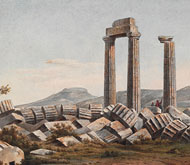 Temple of Zeus, Nemea (detail), after 1805. Simone Pomardi. Watercolor. Courtesy of the Packard Humanities Institute Temple of Zeus, Nemea (detail), after 1805. Simone Pomardi. Watercolor. Courtesy of the Packard Humanities Institute |
Greece's Enchanting Landscape: Watercolors by Edward Dodwell and Simone Pomardi
October 21–February 15, 2016 | The Getty Villa
English
antiquarian Edward Dodwell and Italian artist Simone Pomardi traveled
through Greece in the early nineteenth century, producing around one
thousand illustrations. Selected from a vast archive of their
watercolors and drawings in the collection of the Packard Humanities
Institute, this exhibition brings to life a vanished world.
Learn more about the exhibition »
Learn more about the exhibition »
Continuing This Month
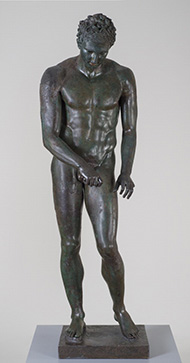 Athlete (The Croatian Apoxyomenos),
Greek, 1st century B.C. Bronze and copper. Republic of Croatia,
Ministry of Culture. Photo: Ljubo Gamulin (Croatian Conservation
Institute) Athlete (The Croatian Apoxyomenos),
Greek, 1st century B.C. Bronze and copper. Republic of Croatia,
Ministry of Culture. Photo: Ljubo Gamulin (Croatian Conservation
Institute) |
Power and Pathos: Bronze Sculpture of the Hellenistic World
Through November 1, 2015 | The Getty Center
Imagine
diving off the coast of California and finding in a life-size bronze
statue. Impossible? It happened to one tourist in the Adriatic Sea in
1999—his find is now known as the Croatian Apoxyomenos, one of the few
complete ancient bronzes preserved to this day. Power and Pathos brings together 50 of the most important surviving bronzes from the fourth century B.C to the first century A.D.
This exhibition was organized by the J. Paul Getty Museum, the Fondazione Palazzo Strozzi in Florence, and the National Gallery of Art in Washington, D.C. with the participation of the Soprintendenza per i Beni Archeologici della Toscana.
Bank of America is the National Sponsor of this touring exhibition. The exhibition is supported by an indemnity from the Federal Council on the Arts and the Humanities. The Los Angeles presentation is also supported by the Getty Museum's Villa Council, Vera R. Campbell Foundation, and the A.G. Leventis Foundation.
Learn more about the exhibition »
This exhibition was organized by the J. Paul Getty Museum, the Fondazione Palazzo Strozzi in Florence, and the National Gallery of Art in Washington, D.C. with the participation of the Soprintendenza per i Beni Archeologici della Toscana.
Bank of America is the National Sponsor of this touring exhibition. The exhibition is supported by an indemnity from the Federal Council on the Arts and the Humanities. The Los Angeles presentation is also supported by the Getty Museum's Villa Council, Vera R. Campbell Foundation, and the A.G. Leventis Foundation.
Learn more about the exhibition »
CLOSING THIS MONTH
Performances
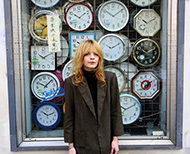 |
Saturday Nights at the Getty: Jessica Pratt
Saturday, October 10, 7:30 p.m. | The Getty Center
Jessica
Pratt is a singer-songwriter whose singular voice and transfixing,
intimate performances are rooted in a California psychedelic folk
tradition. However, the acoustic dream-pop meditations on her album On Your Own Love Again
go beyond straightforward folk sounds, with a distinctly British
perspective that evokes the high-pitched eccentricities of Kate Bush,
the delicate pop melodies of early Marianne Faithfull, and the lingering
introspection of Nick Drake. Free; advance ticket required.
Get tickets »
Get tickets »
Family
 |
Family Festival
Sunday, October 4, 10:00 a.m. –5:00 p.m. | The Getty Center
Explore your animal nature at this daylong family festival celebrating the exhibition In Focus: Animalia.
Transform yourself with whiskers and spots via face painting and then
build a headdress based on your favorite creature. Embrace your wild
side through storytelling, games, and workshops at this free,
interactive event. Come face-to-face with live animals from around the
world, presented by Conservation Ambassadors! Free; no ticket required.
Learn more »
Learn more »
Talks
 Luis Alfaro. Photo: Craig Schwartz Luis Alfaro. Photo: Craig Schwartz |
From Ancient Greece to Modern L.A.: Why the Classics Still Matter
Saturday, October 3, 3:00 p.m. | The Getty Villa
Renowned playwright and performer Luis Alfaro discusses his fascination with Greek tragedies, his re-imagining of Medea
at the Getty Villa, and the ways Euripides still speaks to us. Alfaro
shares how he uses Greek classics to talk about socio-cultural issues of
urban Latino life and in turn introduces new audiences to these ancient
myths and mores. Free, advance ticket required.
Get tickets »
Get tickets »
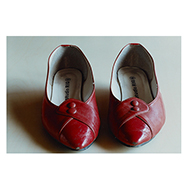 Mother's #57, 2004, Ishiuchi Miyako. Chromogenic print. Courtesy of and Mother's #57, 2004, Ishiuchi Miyako. Chromogenic print. Courtesy of and© Ishiuchi Miyako |
Ishiuchi Miyako in Conversation
Wednesday, October 7, 7:00 p.m. | The Getty Center
Photographer
Ishiuchi Miyako discusses her work and career with Christopher
Phillips, curator at the International Center of Photography in New
York. Free; advance ticket required.
Get tickets »
Get tickets »
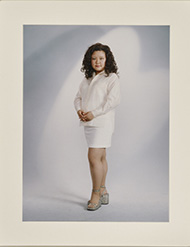 OMIAI ♡,
2001, Sawada Tomoko. Chromogenic print. The J. Paul Getty Museum, Los
Angeles, Purchased with funds provided by the Photographs Council. ©
Sawada Tomoko OMIAI ♡,
2001, Sawada Tomoko. Chromogenic print. The J. Paul Getty Museum, Los
Angeles, Purchased with funds provided by the Photographs Council. ©
Sawada Tomoko |
Contemporary Japanese Photography: A Reaction against "Girl Photography"
Thursday, October 15, 7:00 p.m. | The Getty Center
Sawada
Tomoko and Shiga Lieko, contemporary photographers concerned with
notions of identity as it relates to the medium of photography, speak
with Kasahara Michiko, chief curator, Tokyo Metropolitan Museum of
Photography, about the challenges and influences impacting women
photographers in Japan. Both artists' works are featured in the
exhibition The Younger Generation: Contemporary Japanese Photography. Free, advance ticket required.
Get tickets »
Get tickets »
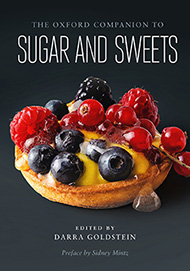 |
Darra Goldstein and The Oxford Companion to Sugar and Sweets
Wednesday, October 21, 2:00 p.m. | The Getty Center
Darra Goldstein, editor of The Oxford Companion to Sugar and Sweets,
discusses her new book with Marcia Reed, chief curator at the Getty
Research Institute. More than just a compendium of pastries, candies,
ices, preserves, and confections, this reference work reveals how the
human proclivity for sweets has brought richness to language, art, and,
of course, gastronomy. Free; advance ticket required.
Learn about the art of sculpting with sugar in this Iris blog post by Darra Goldsten »
Get tickets »
Learn about the art of sculpting with sugar in this Iris blog post by Darra Goldsten »
Get tickets »
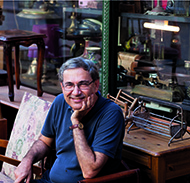 Orhan Pamuk. Photo: Hakan Ezilmez; Yapi Kredi Culture, Arts & Publishing Archive; 2014 Orhan Pamuk. Photo: Hakan Ezilmez; Yapi Kredi Culture, Arts & Publishing Archive; 2014 |
The Art of Writing: Orhan Pamuk
Wednesday, October 28, 7:00 p.m. | The Getty Center
Nobel Prize–winner Orhan Pamuk discusses his new book, A Strangeness in My Mind. The novel follows Mevlut Karataş, a boy who leaves his village for Istanbul to seek his fortune. He sells boza
(a traditional Turkish beverage) on the streets from 1969 to 2012.
Throughout these decades, he witnesses the various transformations that
the people, the city, and the nation undergo. Free; advance ticket
required.
Get tickets »
For a complete list of daily activities at the Getty Center and Getty Villa, please see our event calendar »
Get tickets »
For a complete list of daily activities at the Getty Center and Getty Villa, please see our event calendar »
From The Getty Store
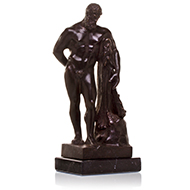 |
Italian Cast Bronze
This statuette of the Weary Herakles is an interpretation of a 4th century B.C. bronze by Lysippos, the favorite sculptor of Alexander the Great. The Greek hero Herakles, gatekeeper of Olympus and god of strength, carries a club over his left shoulder and holds a lion skin in his right hand, weary from his labors. Crafted in Florence, Italy, by a historic foundry using the ancient lost wax casting technique, this exquisite work is evocative of sculptures currently on view in the exhibition Power and Pathos: Bronze Sculpture of the Hellenistic World.
Shop new arrivals »
This statuette of the Weary Herakles is an interpretation of a 4th century B.C. bronze by Lysippos, the favorite sculptor of Alexander the Great. The Greek hero Herakles, gatekeeper of Olympus and god of strength, carries a club over his left shoulder and holds a lion skin in his right hand, weary from his labors. Crafted in Florence, Italy, by a historic foundry using the ancient lost wax casting technique, this exquisite work is evocative of sculptures currently on view in the exhibition Power and Pathos: Bronze Sculpture of the Hellenistic World.
Shop new arrivals »
Community Partners
 |
FAR-SITED: Creating and Conserving Art in Public Places
Friday–Sunday, October 16–18, 2015 | Long Beach, CA
The University Art Museum at California State University, Long Beach, Getty Conservation Institute, and Museum of Latin American Art present "FAR-SITED: Creating and Conserving Art in Public Places." Nationally renowned arts professionals will explore the possibilities and challenges of creating public art in the 21st century during this three-day conference for an audience of artists, conservators, arts administrators, scholars, and students. Key note speech by visual and performance artist and educator William Pope.L.
Getty360 e-newsletter subscribers can use promo code "GETTYVIP" to receive 20% off the registration fee. Space is limited.
Learn more and register »
Friday–Sunday, October 16–18, 2015 | Long Beach, CA
The University Art Museum at California State University, Long Beach, Getty Conservation Institute, and Museum of Latin American Art present "FAR-SITED: Creating and Conserving Art in Public Places." Nationally renowned arts professionals will explore the possibilities and challenges of creating public art in the 21st century during this three-day conference for an audience of artists, conservators, arts administrators, scholars, and students. Key note speech by visual and performance artist and educator William Pope.L.
Getty360 e-newsletter subscribers can use promo code "GETTYVIP" to receive 20% off the registration fee. Space is limited.
Learn more and register »
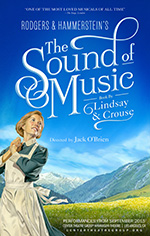 |
The Sound of Music
September 20–October 31 | Ahmanson Theatre
Experience The Sound of Music, live on stage at the Ahmanson Theatre. Tony Award–winner Jack O'Brien directs this new production, telling the iconic tale of Maria and the Von Trapp family like never before. Getty360 e-newsletter subscribers can use promo code "MARIA" to receive a Family 4-pack ticket offer. (Code MARIA valid for 9/20–10/2 performances only. Restrictions may apply.)
Learn more and get tickets »
September 20–October 31 | Ahmanson Theatre
Experience The Sound of Music, live on stage at the Ahmanson Theatre. Tony Award–winner Jack O'Brien directs this new production, telling the iconic tale of Maria and the Von Trapp family like never before. Getty360 e-newsletter subscribers can use promo code "MARIA" to receive a Family 4-pack ticket offer. (Code MARIA valid for 9/20–10/2 performances only. Restrictions may apply.)
Learn more and get tickets »
Highlights at a Glance—October
Opening this Month
Ishiuchi Miyako: Postwar Shadows (Oct. 6–Feb. 21)
The Younger Generation: Contemporary Japanese Photography (Oct. 6–Feb. 21) Art of the Fold: Drawings of Drapery and Costume (Oct. 6–Jan. 10) The Edible Monument: The Art of Food for Festivals (Oct. 13–Mar. 13) Eat, Drink, and Be Merry: Food in the Middle Ages and Renaissance (Oct. 13–Jan. 3) Continuing This Month
Power and Pathos: Bronze Sculpture of the Hellenistic World (Through Nov. 1)
Louis Style: French Frames, 1610–1792 (Through Jan. 3) Closing This Month
In Focus: Animalia (Through Oct.18)
Hot Tickets
Talk: Ishiuchi Miyako in Conversation (Oct. 7)
Film: Things Left Behind (Oct. 10) Performance: Saturday Nights at the Getty (Oct. 10) Talk: Contemporary Japanese Photography (Oct. 15) Talk: Darra Goldstein (Oct. 21) Talk: Orhan Pamuk (Oct. 28) |
Opening this Month
Greece's Enchanting Landscape: Watercolors by Edward Dodwell and Simone Pomardi (Oct. 21, 2015–Feb. 15, 2016)
Hot Tickets
Talk: Why the Classics Still Matter (Oct. 3)
|

댓글
댓글 쓰기